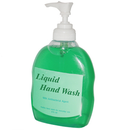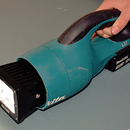Introduction: Automatic Chicken Feeder
This chicken feeder is designed to keep unwanted visitors from your chicken food and helping themselves to your chickens dinner. The chicken has to stand on the pedal to open the top and get lunch, most birds, rats, mice, are not heavy enough to push the pedal down. It also keeps the food dry as the top will keep the rain out.
To train your chickens just put some grain on the lid for a few days they soon get the hang of it. Or if you have some very stupid chickens like mine you may have to prop the lid open for a few days.
The chicken feeder needs to be place on a hard flat surface, as if it rocks around too much the chickens get spooked and it is diffcult for them to open.
Step 1: Learning Intentions and Success Criteria
Learning Intentions
- To work safely in the workshop.
- To build a chicken feeder toolbox using a design and instructions.
- To use hand tools correctly and safely.
- To use sheet metal tools correctly and safely.
- To be a self-directed learner.
Success Criteria
- I understand the safety rules and I am working safely in the workshop.
- I can follow the instructions independently.
- I can produce a chicken feeder and follow the instructions.
- I can safely use marking out tools, tin snips, mangabend, spot welder and files correctly.
Step 2: Stuff You Will Need
You can make this project from galvanized sheet metal or aluminum.
The design has safety edges to help with strength and sharp edges if you use galv
- .6 galv sheet or 1.6 aluminum
- 2 hinges
- pop rivets and a rivet gun
- tin snips
- big square
- 6 bolts and locking nuts
- 6mm drill
- 3mm drill
- 3mm X 12mm flat aluminum
- ruler
- scriber
- sheet metal folder or brake
- sheet metal guillotine is also very useful
- spot welder can also be used if you wish
- it is worth the effort to have a look at the video on how to use snips correctly has it will help with the fit and finish of your work.
Step 3: Start With the Base
The base is the easiest part to make, cut yourself a piece of sheet metal 530mm X 390mm and make sure it is square. Follow the measurements on the drawings. The design drawing without measurements are shown for clarity through out this instructable.
The photos have pop up note on them to help you with the build
Step 4: The Sides Are Next
Cut yourself 2 pieces of sheet metal 220 X 220mm and follow the photos with pop ups. Remember there is a safety edge on top and the two part are a mirror image of each other, so the holes need to go on opposite sides to each other.
You can either spot weld or pop rivet the sides to the base.
Step 5: The Links
The 4 links are easy to make and it is a good idea to tape them together so you mark and drill both sides at once.
You will need to 12mm x 3mm flat aluminum, 2 X 290mm and 2 x at 150mm
Click on the photos and follow the pop ups
Step 6: Making the Lid
The lid is a little more challenging as there are lot of lines to confuse you. If your not sure on the exact size of your hinge centers it can be easier to attach the hinge on with one rivet then drill the other holes.
You will need a couple of small hinges, pop rivets, and a rivet gun to fit the lid.
Start with a sheet 249 X 624 mm and start by marking out the safety edges at 12 mm.
It is much easier to drill the holes before you fold sheet.
Click on the photos and follow along.
Step 7: The Pedal
The pedal is also quite challenging with lots of lines which can get confusing.
Watch out for the final bend on the ends it needs to have gap for the links to fit into and it would be very easy to bend it on the wrong line
Click on the photos and follow along













